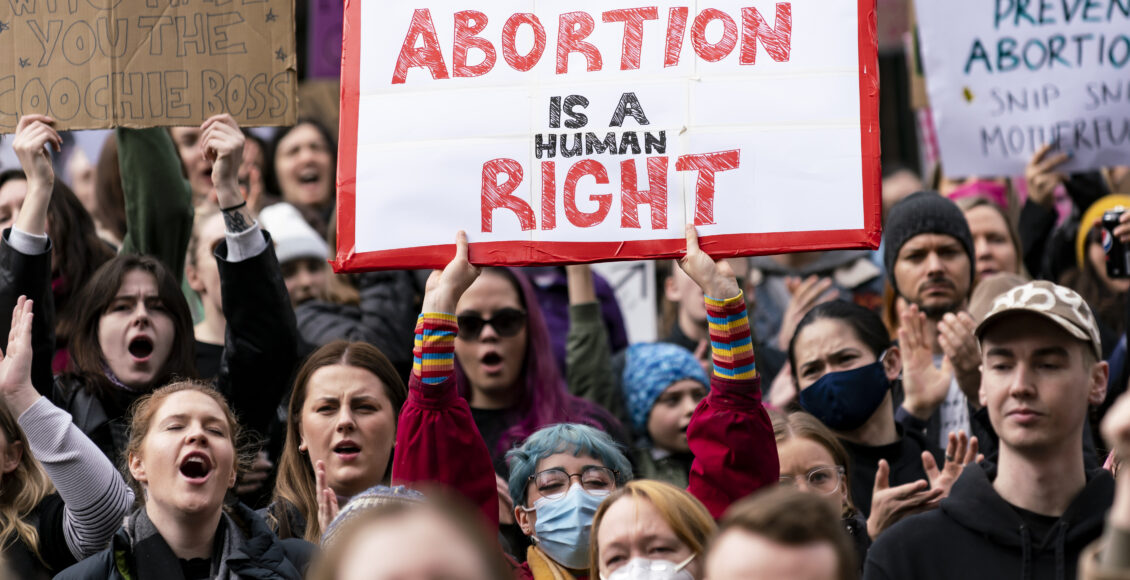Breaking Down Barriers: The Quest for Equitable Abortion Access in Canada

It’s been just over a year since Roe v. Wade was overturned in the United States, removing the constitutional protection of abortion rights in the country, and marking a significant setback in reproductive rights. While Canada has often been viewed as a leader in comprehensive abortion access, it’s not as black and white as it may seem. The impact of Dobbs v. Jackson Women’s Health Organization reverberates beyond U.S. borders and fueled anti-abortion sentiments worldwide. To provide some context, the Dobbs case involved a Mississippi state law that banned most abortions after 15 weeks of pregnancy, which directly challenged Roe v. Wade and women’s established right to choose abortion before the fetus reaches viability (usually at approximately 24 weeks). The Supreme Court’s ruling in this case thus undermined the precedent set by Roe v. Wade, and opened the door to states across the country to further restrict abortion access, furthering fuel for anti-abortion groups across the country.
Contrary to mainstream narratives, Canada is not a stranger to these anti-abortion sentiments. Abortion access is nowhere near as seamless as it is often cited as in comparison to the U.S.
So, what really is the legal status of abortion in Canada? Canada operates under a federal system, where provincial systems and laws can greatly differ, especially in the area of healthcare. Despite abortion being decriminalized, it is not recognized as a constitutional right. Although the Canada Health Act provides a regulatory framework across the country, each province has its own policies regarding abortion access which will be further explored in this article. This means that across different regions and provinces, access to abortion greatly changes depending on local policies. This complex interplay of laws and regulations creates disparities in access to abortion services across the country.
Disparities in provincial abortion access are made up of a multitude of factors:
1. Availability of clinics
Some provinces have a good amount of abortion clinics, whereas others have a sheer few in the entire province. Factors such as the local political climate, availability of healthcare providers, and provincial government funding all interplay to determine the level of accessibility in a given province. For instance, in 2021, New Brunswick had banned government funding for abortions outside of just three appointed hospitals in the entire province, leading the federal government to withhold healthcare transfers. In Nova Scotia, there are only four hospitals that offer surgical abortion services.
2. Types of abortion: medical vs surgical
The types of abortion available also vary between provinces. Medical abortions, which involve taking medication (usually mifepristone followed by misoprostol) to terminate a pregnancy, are generally only considered safe and effective within the first 10 weeks of gestation. While this is a method that can easily be done in a healthcare provider’s office, or at home following medical instructions, easy access to medical abortion can be key to making abortion more widely accessible. However, this method also may face challenges, for instance, during the COVID-19 pandemic, the prescription of abortion pills in Quebec was hampered, further limiting access to this method of abortion.
Surgical abortion, on the other hand, is a procedure performed by a healthcare provider with different techniques such as aspiration abortion and dilation and evacuation (D&E). The choice of surgical method may depend on the gestational age of the pregnancy and the woman’s medical history. Surgical abortions are generally quicker and are often used for pregnancies in later stages. However, the availability of these abortion methods can vary between provinces in Canada due to differences in healthcare policies, regulations, and access to healthcare services. Some provinces may have more comprehensive reproductive healthcare services, making both medical and surgical abortions more accessible, while others may have more restrictive policies that limit access. For example, British Columbia has relatively comprehensive reproductive healthcare services in which both medical and surgical abortions are offered without significant barriers. On the other hand, until relatively recently, PEI did not provide abortion services on the island, and individuals had to travel to other provinces for these procedures.

3. Geographical barriers
Geographical barriers, particularly in remote areas, further exacerbate the challenges faced by individuals seeking abortion care. Abortion is time-sensitive and a medically necessary service, yet those who live far away from urban centres face a major increase in difficulty to access. Living outside of urban centres also comes with additional costs and challenges such as travel expenses, taking time off work, planning for home and childcare, and more. To put this disparity into perspective, in the provinces of Alberta, Saskatchewan, Manitoba, and Ontario, abortion providers are available in urban centres although more than a third of their populations live in rural and remote areas.
4. Laws regarding time of abortion
Abortion is time-sensitive. Abortion access and laws between provinces vary greatly depending on the timing abortion is sought and how far along an individual is. While a significant majority of abortions are done in the first 12 weeks, there are many reasons as to why it may need to be done after this timeframe, ranging from lack of awareness of pregnancy, to medical needs. Despite this, each province is different in access depending on the timeframe. For instance, in Prince Edward Island, the gestational limit is 12 weeks, and in Yukon and Nunavut, it’s 13 weeks. Across the entire country, only three locations offer abortions to 23 weeks in 6 days, in B.C., Ontario, and Quebec. This means that in serious and medically necessary situations, while not as common, it becomes significantly more difficult and challenging to access abortion for those located far away from these areas.
5. The intersectional barriers to abortion access.
Intersectional barriers further compound the challenges faced by individuals seeking abortion care. For example, language barriers can make it harder for someone who doesn’t speak English to access information and services. Transgender individuals often experience higher rates of discrimination in reproductive healthcare settings, and there is a lack of knowledge or training for trans-affirming abortion care. The presence of “women’s healthcare departments” can exclude and neglect the specific needs and identities of trans individuals.
Despite Canada being perceived as a country with a more “permissive legal environment” for abortion, it still faces challenges similar to those in the United States. It’s important to remember, especially in a time of increased attacks on reproductive rights worldwide, that abortion access continues to be an area in need of improvement and protection, not just in the U.S., but largely in Canada as well.
What can Canada possibly do to protect abortion rights and increase abortion access?
Moving forward, there needs to be an increased focus on ensuring consistency and comprehensiveness in abortion access and policies across the country. Access to safe abortion should not be restricted by one’s geographic location or socioeconomic status. In provinces that fall short, there should be increased investment and funding for healthcare facilities that provide abortion services, particularly in underserved areas such as more remote regions.

Further, it has been proven to be effective to introduce a larger range of abortion methods, including both medical and surgical options. To address the need for greater accessibility despite limited funding and healthcare providers, countries such as the United Kingdom have introduced the option to receive medical abortion pills through the mail, after an easy consultation online or through the phone.
When targeting the intersectional barriers to abortion access, there needs to be a specific and studied focus to address these barriers. Whether through comprehensive cultural competency training for healthcare providers, creating gender-affirming spaces for abortion access, or working alongside marginalized groups to ensure best practice, specific and intentional steps toward improving these intersectional barriers need to be taken.
In the grander scheme, while Canada may not be facing the setbacks in abortion rights the United States is, it can’t be cited as the perfect country for comprehensive abortion access either. Nonetheless, progress should continue to be made to protect abortion rights and increase access for folks across the nation, in order to set the precedent for countries across the world and for our Southern neighbour. With this, Canada can take steps to increase the truth in the sentiment of being cited as a country with great and encompassing access to abortion.
Edited by Anya Narang
Featured Image: “Roe v Wade OVERTURNED: Protest to defend US Abortion Rights (Melb)” by Matt Hrkac licensed under CC BY 2.0
